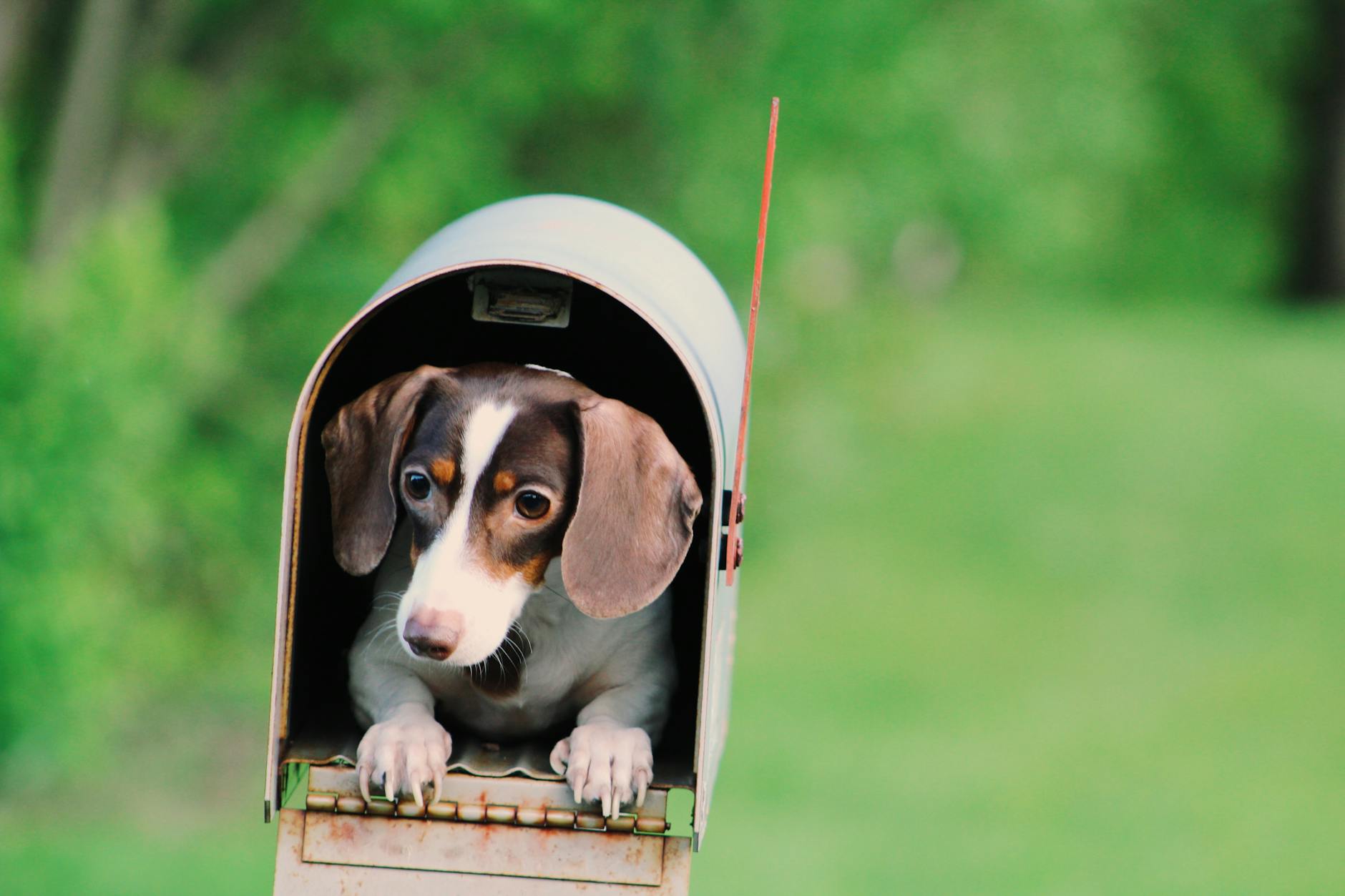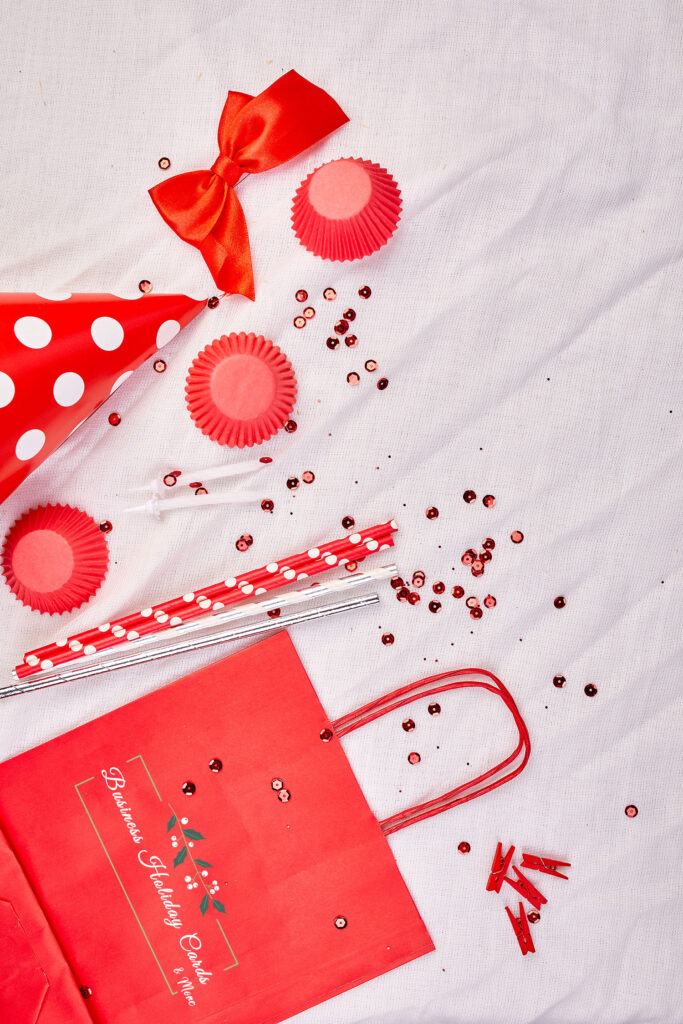Snail mail is making a real comeback, and it’s not just about nostalgia. In a world packed with fast, forgettable messages, a handwritten letter feels rare and special. It stands out, shows real effort, and brings a personal touch that most digital chats can’t match.
Starting a monthly snail mail challenge with friends is a simple way to reconnect and get creative. Each letter is a chance to brighten someone’s day and share a bit of your world. If you’re looking for a meaningful ritual that sparks creativity and strengthens your friendships, this monthly tradition is easy to begin and more rewarding than you might expect.
Why Start a Monthly Snail Mail Challenge?
Starting a monthly snail mail challenge with friends does more than fill mailboxes; it taps into something deeper that digital chats just can’t give. Sending and receiving handwritten letters sparks real emotion and connection. The act of writing, choosing your favorite stationery, and sealing an envelope by hand brings back the magic of meaningful communication. This section looks at why this challenge is worth your time, exploring how it helps friendships grow, creates moments of mindfulness, and lets everyone show off their creative side.
 Photo by Noelle Otto
Photo by Noelle Otto
Fostering Deeper Connections
A handwritten letter goes beyond “how are you” texts. It’s a physical reminder that someone cares enough to slow down and spend time on you. Each note feels personal and intentional. The texture of paper, unique handwriting, and even small doodles turn every letter into something of a keepsake.
- Letters invite honest sharing. You might find yourself writing things you wouldn’t say out loud.
- Over time, these exchanges build trust, encourage vulnerability, and make friendships stronger.
- It’s common for people who send letters to keep them for years, revisiting old notes like time capsules of your shared moments.
Mindfulness in a Busy World
Sitting down to write a letter is a mindful act. In a busy world where everything moves at lightning speed, writing by hand gives you space to pause and reflect.
- Writing requires focus, which helps quiet your mind and reduce stress.
- Sending snail mail turns communication into a calming ritual, almost like journaling, but for someone else.
- Simple actions (choosing the right card, picking out a stamp) turn the experience into something meditative and intentional.
Creative Expression
Handwritten mail is never just about words. Every part of your letter is a blank canvas, offering lots of room for creativity.
- Decorate your envelope with stickers, hand lettering, or a colorful stamp.
- Personalize your stationery, add a small sketch, or tuck in a pressed flower.
- No two letters are ever the same, and each one can reflect your mood and personality.
The Emotional Impact and Nostalgia
Getting a letter in the mail is exciting—almost like opening a present. The care and effort are obvious at first glance. There’s a mix of surprise, gratitude, and nostalgia each time you spot an envelope with your name on it.
- Handwritten notes make the recipient feel valued and recognized.
- Letters capture memories in a tangible way, letting people return to them whenever they need a pick-me-up.
- The nostalgia of snail mail brings back childhood memories and family traditions, giving it a special kind of warmth not found in texts or emails.
A monthly snail mail challenge isn’t just about sending mail. It’s about showing your friends that they matter and offering a real moment of calm in an otherwise loud, digital world.
Preparing for Your Snail Mail Challenge
Getting ready for your monthly snail mail challenge can be just as fun as sending those first letters. A little planning now will save you trouble later and make the whole process smoother for the group. From choosing the right supplies to learning the postal basics and organizing your crew, a few simple steps will help everyone get started on the right foot.
Gathering Stationery and Supplies
 Photo by cottonbro studio
Photo by cottonbro studio
A good snail mail stash keeps the process easy and fun, even when life gets busy. Here’s what to gather before your first mailing:
Essentials for Sending Letters
- Paper: Choose smooth, thick letter paper, notecards, or even printable templates for longer notes.
- Envelopes: Stock up on standard and colorful envelopes in a few sizes.
- Pens: Use pens that don’t smudge, like gel, ballpoint, or felt-tip pens in black and fun colors.
- Postage Stamps: Keep a selection of regular and variable-rate stamps on hand so you’re always ready to send.
Decorative Extras
- Washi Tape: Adds color and personality to envelopes and cards without extra bulk.
- Stickers: Alphabet, themed, or decorative stickers make letters stand out.
- Rubber Stamps & Ink Pads: Perfect for initials, fun shapes, or adding visual interest.
- Labels: Use clear or bold labels for neat addresses, especially if using dark or patterned envelopes.
Creative and Eco-Friendly Alternatives
- Recycled Paper and Envelopes: Old maps, book pages, or brown paper bags make unique mail.
- Pressed Flowers: Add a bit of nature as a flat, mailable keepsake.
- Small Extras: Stuff in tea bags, bookmarks, washi samples, or photo prints—just remember to stay within weight and thickness limits.
Keeping your supplies in a small basket or box will make writing sessions quick and stress-free.
Knowing Postal Rules and Logistics
Snail mail is personal but also needs to be practical. A little time learning the mailing basics keeps your letters from getting lost or returned.
What Can and Can’t Be Mailed
- You can mail letters, postcards, photos, cards, and small flat surprises like stickers or pressed flowers.
- Don’t mail hazardous materials, liquids, bulbs with mercury, or anything that can break, leak, or spoil. Always check your country’s postal site for details if planning something unusual.
Measuring and Postage Tips
- Weigh and Measure First: Make sure your finished envelope is within the maximum thickness (usually 1/4 inch) and weight (typically 1 oz/28g for standard letters). Postcards are thinner and lighter.
- Choose the Right Postage: Regular stamps work for standard letters. For thick, heavy, or oddly shaped envelopes, visit the post office counter or check your postal website to calculate the right postage and avoid mail getting delayed.
- Address Clearly: Write addresses neatly, using labels if needed. Return addresses help if mail can’t be delivered.
Quick Checks Before Mailing
- Seal your envelopes well, especially if using wax seals or lots of washi tape.
- If sharing mail online, cover up addresses for privacy.
A few minutes spent with these steps will help everyone in your group enjoy hassle-free deliveries every month.
Organizing Your Group for Success
Success with a snail mail challenge depends on everyone staying connected and feeling involved. A little structure helps, but this isn’t about rules—it’s about making the process easy, safe, and fun.
Assembling Your Group
- Ask friends who share your enthusiasm or invite people from book clubs, local community groups, or online pen pal circles.
- Try to keep your first group small, five to ten people, to make tracking and mailing easier.
Collecting Addresses Securely
- Use a private message thread, encrypted email, or a trusted spreadsheet (like Google Sheets set to ‘view only’) to collect and share addresses.
- Remind your group to keep this information private and only for mailing.
Setting Expectations
- Let everyone know how often you’ll send mail (monthly works best for most).
- Decide if everyone will write to one person each month in a “round robin,” or if you’ll match partners.
- Share any creative themes you want to try, but keep the commitment light and flexible.
Choosing a Monthly Mail Schedule
- Pick a simple schedule, like mailing by the first Saturday each month.
- Gentle reminders (through a group chat or calendar notice) keep people on track.
- Check in after each month to see how it went and collect feedback, adjusting as you go.
Good communication and a shared sense of fun are what really make a snail mail group last!
Setting the Rules and Structure for the Challenge
A monthly snail mail challenge works best when everyone knows what to expect. By agreeing on a flexible but clear set of rules, you keep the group engaged and avoid confusion. A simple structure also saves time and makes the whole thing more fun for everyone. This section covers how to set up themes, choose a sending style, and handle months when life gets in the way. With a bit of planning, your challenge can stay fresh and easy, month after month.
Choosing a Theme or Prompt Each Month
Themes give everyone something to look forward to and keep the letters from feeling repetitive. They help spark creativity, break writer’s block, and add a bit of anticipation before each mailing.
Some favorite snail mail themes and prompts include:
- Q&A Letters: Each person answers a set of questions and sends their own for the next round.
- Recipes: Share your favorite recipe, a new kitchen experiment, or a family classic.
- Favorite Quotes: Write about what a specific quote means to you, or swap motivational lines.
- Personal Stories: Share memories from childhood, recent fun adventures, or any personal experiences.
- Collaborative Art: Start a doodle or a small art piece, then let each member add their own touch before sending it on.
Picking themes should be simple and fair. Try one of these methods:
- Group Vote: Use a group chat poll or shared document to vote on next month’s theme.
- Theme Rotation: Take turns so each group member picks a theme for a month.
- Theme Jar: Write theme ideas on slips of paper, draw one randomly at the start of each month.
No matter the method, what matters most is that everyone feels involved in creating the experience.
Deciding on Sending Order and Formats
The way you organize letter exchanges sets the tone for the whole challenge. You want the format to fit your group size and make sure no one gets left out.
Here are three popular snail mail formats:
- Round-Robin: Each person sends a letter to the next person in a set list, like a circle. The mail moves around so everyone sends and receives on a regular schedule.
- Paired Exchange: People are matched up, and each pair swaps letters for the month. You can rotate pairs each month to keep things interesting.
- Everyone-to-Everyone: Every participant writes to every other member each month. This works best for small groups (three to five people) since it involves more writing.
 Photo by Eva Bronzini
Photo by Eva Bronzini
To keep things on track, use simple tools:
- Mailing Lists or Tracking Sheets: Set up a Google Sheet with everyone’s names and mailing sequence. Leave space to mark when you’ve mailed and received.
- Reminders: Gentle nudges via group chat or calendar alerts help everyone stick to the plan.
- Shared Calendar: If your group prefers, add mailing deadlines to a shared calendar for easy reference.
A little bit of organization now will save confusion later and help everyone stay connected.
Handling Missed Months or Late Mail
Life happens, and someone might skip a month or send a letter late. Your challenge should never feel strict or stressful, so plan ahead for lapses.
Kind approaches that keep things laid-back:
- Grace Periods: Allow a few extra weeks if someone’s running late, especially during busy times of year.
- Catch-Up Months: Make one month “open,” where everyone can send late or extra letters, or just take a breather.
- No-Guilt Zone: Remind the group that misses are okay. The point is fun and friendship, not pressure.
If mail gets lost or delayed, a quick group message can clear things up. Stay flexible and support each other, so no one dreads the challenge or feels left out. Keeping the rules friendly ensures the snail mail stays a source of joy, not stress.
Creative Ideas to Make Snail Mail Special
Snail mail becomes unforgettable when you add thoughtful extras, bits of flair, and interactive surprises. It’s about more than paper and ink—it’s about showing someone you care in small, surprising ways. Here are tried-and-true methods to lift every piece of mail you send, making your monthly snail mail challenge something friends can’t wait to receive.
Fun Enclosures and Mini-Gifts
Every envelope can be a tiny gift bag. Slip in something unexpected and it feels like a bonus—no extra postage needed as long as it’s flat.
- Pressed Flowers or Leaves: Pick a flower or leaf from your yard or favorite park, press it for a week, and send it tucked into a card. It’s a piece of your world that lasts.
- Stickers and Washi Tape Samples: Cut a strip or tuck a sheet of stickers. Some people love swapping sticker flakes or washi samples on a plastic card for easy mailing.
- Personalized Recipe Cards: Print or handwrite a recipe that means something to you. Maybe it’s the cookies you always bake or a dish you want them to try.
- Small Art Prints or Doodles: Draw a postcard, paint a mini landscape, or print a small favorite photo. Some pen pals even exchange tiny zines.
- Origami or DIY Crafts: Fold a paper crane, make a bookmark, or send a flat puzzle or MadLibs for a bit of fun.
- Quotes or Song Lyrics: Jot down a line from a song or poem on a decorative card.
- Mini Bookmarks or Postcards: These are both practical and easy to make or pick up in a shop.
Want more ideas? Think: tea bags, pressed ferns, short handwritten lists of your favorites, or even a “playlist” written out for them to listen to online. The goal is to spark delight—not to overwhelm or break the bank.
Decorative Techniques and Envelope Art
The outside of the envelope is your first chance to make an impression. A little effort here feels welcoming and genuine.
 Photo by cottonbro studio
Photo by cottonbro studio
- Hand Lettering: Use marker pens or brush pens for beautiful names or quotes across the front.
- Washi Tape Borders: Create simple designs along the flap or the corners, or seal the back with a themed strip.
- Rubber Stamps and Stencils: Add patterns, animals, or favorite motifs. Mix colors for extra depth.
- Envelope Collage: Upcycle magazine clippings, scrapbook paper, old maps, or postcards as envelope liners or decorations.
- Doodles and Artwork: Draw tiny scenes, banners, or cartoon portraits—especially if you have an inside joke.
- Custom Stamps or Vintage Postage: Use unique or themed stamps for subtle personality.
- Letterlocking: Try old-fashioned folding techniques for an envelope that opens with a twist.
A decorated envelope stands out in the mailbox, building excitement before the letter’s even opened. The more creative you get, the more fun each delivery becomes.
Incorporating Collaborative Projects
Fuel your snail mail circle with activities that grow over months and build anticipation with every envelope.
- Round-Robin Stories: One person starts a story with a paragraph, then each friend continues it month by month. By the end, you’ll have a short story penned by every hand.
- Art Swaps: Begin a drawing or doodle, then send it along. Each person adds to the artwork, creating a collective piece.
- Mail Puzzles: Split up a puzzle, quiz, or scavenger hunt. Each month unlocks a new clue or piece.
- Recipe Chains: The group passes along a recipe card, each person adding their own tweaks or a favorite dish until you have a shared cookbook.
- Ongoing Lists: Start a “favorites” list—books, movies, places to visit—then build on it as it travels.
- Chain Scrapbooks: Start a small, flat booklet or single page and send it around. Each person adds photos, notes, or mementos. When it’s full, return it to the original sender or share copies.
Collaborative projects add a sense of shared adventure to your mail. Each letter doesn’t stand alone—it’s part of something bigger, and everyone is a co-creator. This ongoing creativity is the secret sauce that makes friends eagerly check their mailboxes, month after month.
Maintaining Momentum and Building Community
Keeping the monthly snail mail challenge going strong means making it something your group will look forward to, year after year. A tradition sticks when everyone feels seen and connected, not just at the start, but all the way through. Sharing progress, celebrating together, and staying open to new ideas help turn snail mail into a real highlight, not just a to-do.
Sharing Progress and Celebrating Milestones: Ideas for Documenting Received Mail, Celebrating Anniversaries, or Sharing Photos (With Consent) in a Private Group Chat

Photo by Erik Mclean
People love seeing the ripple effect of their efforts. Keeping everyone excited is easier when you make it simple to show off what arrives, reflect on what you’ve sent, and cheer each other on. Here are practical ways to do that in your group:
- Photo Shares in a Private Chat: Make a group chat or private album where members post photos of mail they’ve received (after getting permission from the sender). Blur out addresses or personal notes for privacy, but show off artwork or fun extras. The visual feedback is motivating, and everyone gets new ideas.
- Monthly “Mail Calls”: Invite each person to summarize their favorite piece they sent or received that month. Think of it as your group’s version of happy mail “show and tell.”
- Celebrate Anniversaries: When your group finishes its first year, celebrate with a group photo collage, a digital badge, or even a mailed certificate. Acknowledge birthdays, challenge milestones (like the 12th consecutive month), or fun themes (best-decorated envelope).
- Creative Documentation: Encourage members to keep a mini “mail log” or journal. They can jot down highlights or paste in photos, stamps, or dried flowers from each letter.
- Spotlight Member Contributions: Take turns featuring a member each month. They can share a favorite memory or piece of art in your group chat or newsletter.
Making milestones visible—big or small—helps each member feel appreciated. You’ll see energy build as the mail pile grows and traditions start to take shape.
Adapting to Group Feedback and Changing Interests
If you want your snail mail challenge to become a tradition, it can’t stay rigid. Friendships change, new interests pop up, and your group might want to mix things up. Welcoming feedback and tweaking the experience keeps the tradition fresh and fitting for everyone.
The best snail mail groups:
- Ask for Feedback Regularly: Throw out simple check-in questions in your chat or a quick poll after a few months. Find out which themes are sparking joy, and which ones need a break.
- Switch Up Themes and Formats: Let members suggest theme ideas, vote on the next month’s prompt, or propose collaborative projects. Try new formats like postcard months, letter art swaps, or themed mailings based on seasons or holidays.
- Stay Flexible with Commitment: For months when life is busy, drop the pressure. Offer a “low-key” option, like a simple postcard or even just a fun sticker exchange. Remind everyone this is about connection, not obligation.
- Invite New Friends: Keep the door open for inviting new members or letting people take a break without worrying about upsetting the group schedule.
- Feature Suggestion Boxes: Set up a virtual “suggestion box” (even just a pinned chat message) for anonymous ideas—could be theme requests, ways to decorate, or suggestions for community projects.
The key is honest and open communication. As interests shift and the group gets more comfortable, your snail mail tradition can grow right alongside your friendships. What started as a simple swap often becomes something the whole group cherishes—a community that’s built one envelope at a time.
Conclusion
Starting a monthly snail mail challenge with friends offers more than a stack of notes—it keeps friendships real, lets creativity shine, and gives you moments you can hold on to. Mailing a letter, no matter how simple or messy, is a small act that shapes bigger memories. Let the quirks and unfinished thoughts live side by side with beautifully decorated envelopes.
Release any pressure to write perfect letters. Focus on showing up and having fun with it. Sometimes, the surprises and slip-ups are what everyone remembers the most.
Stay open to where your challenge takes you, and remember: every letter adds a little more connection to each mailbox. Thanks for reading, and if you give this tradition a try, share your favorite snail mail moments with your friends—or with us in the comments—so the spark keeps spreading.


